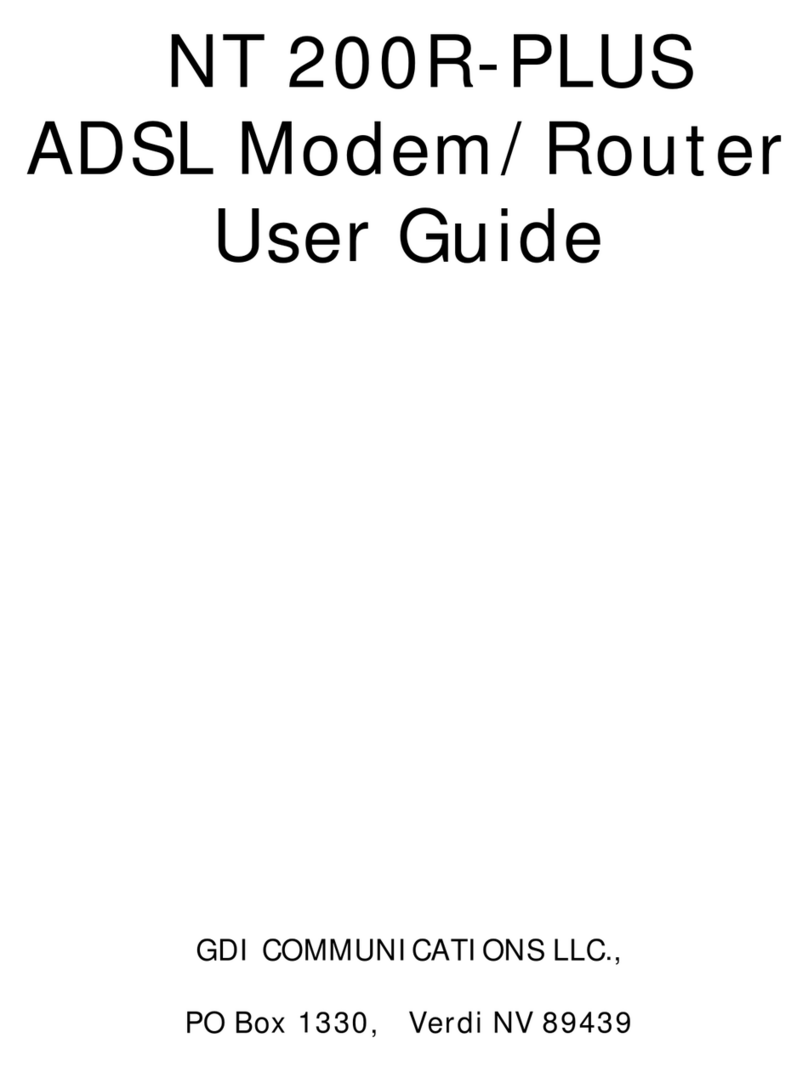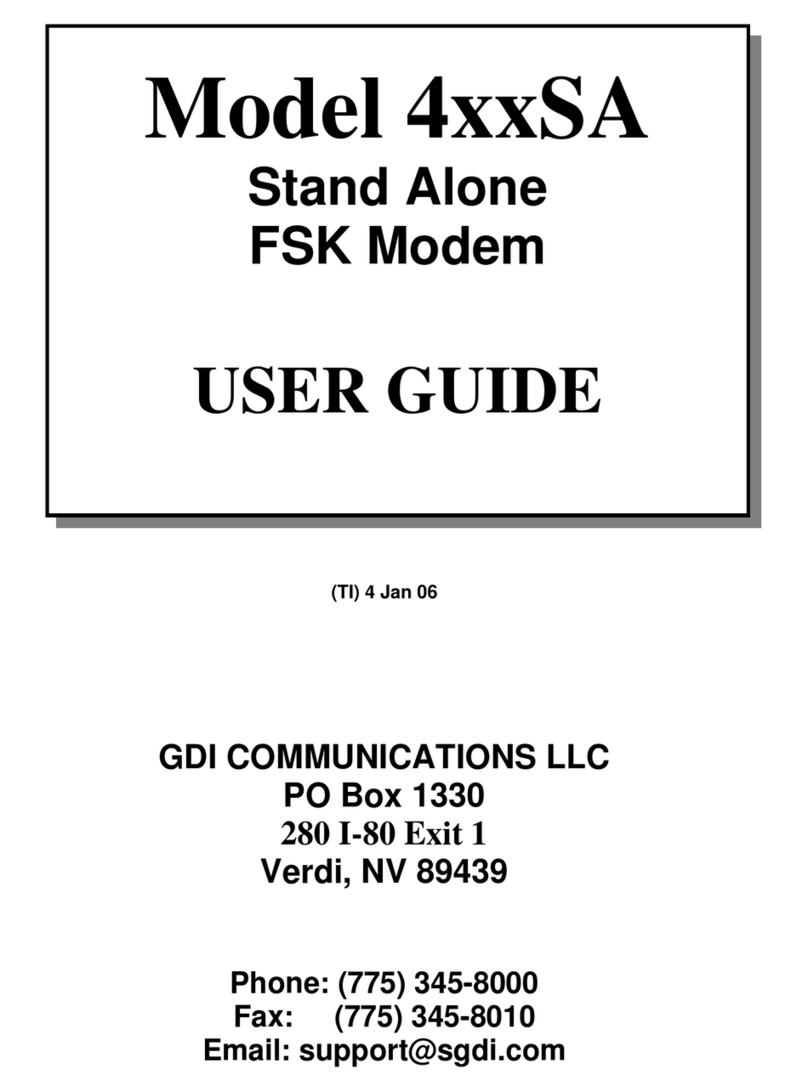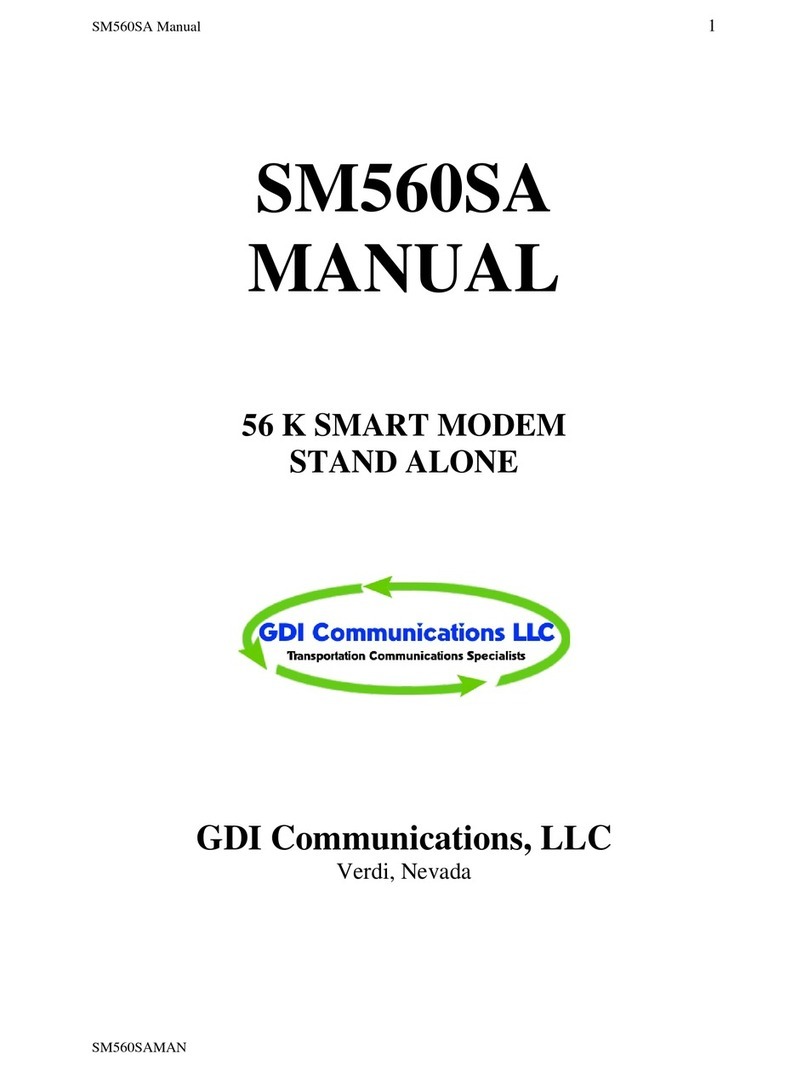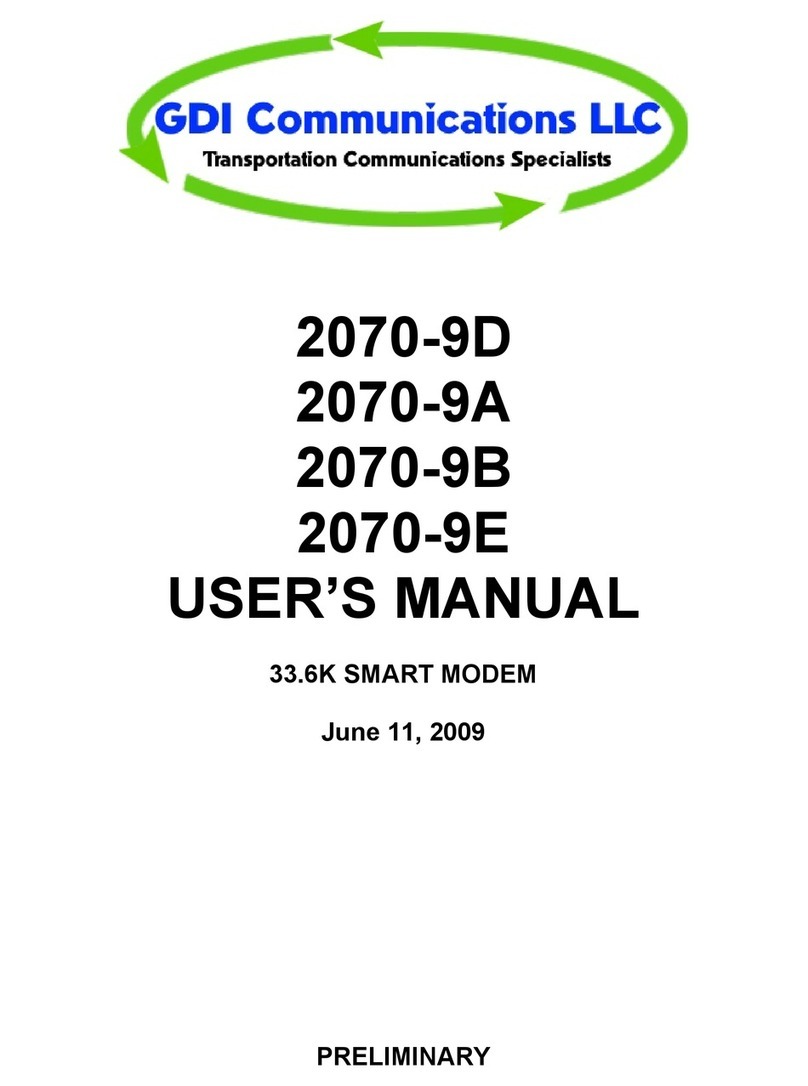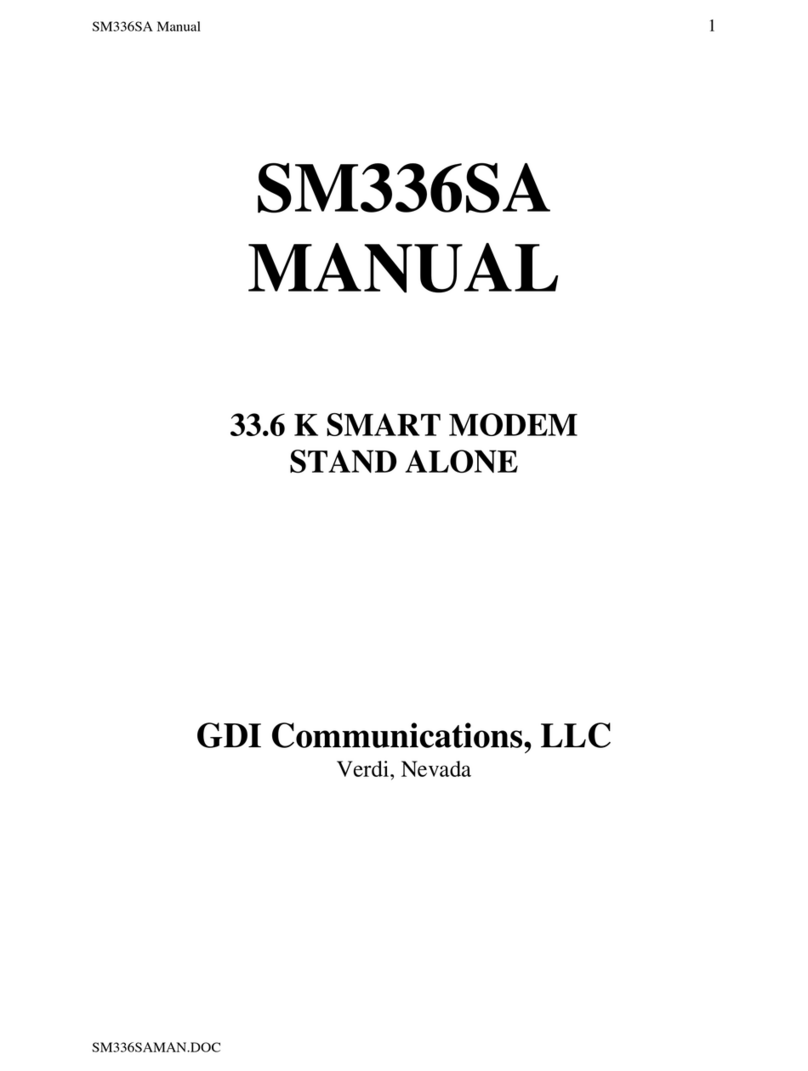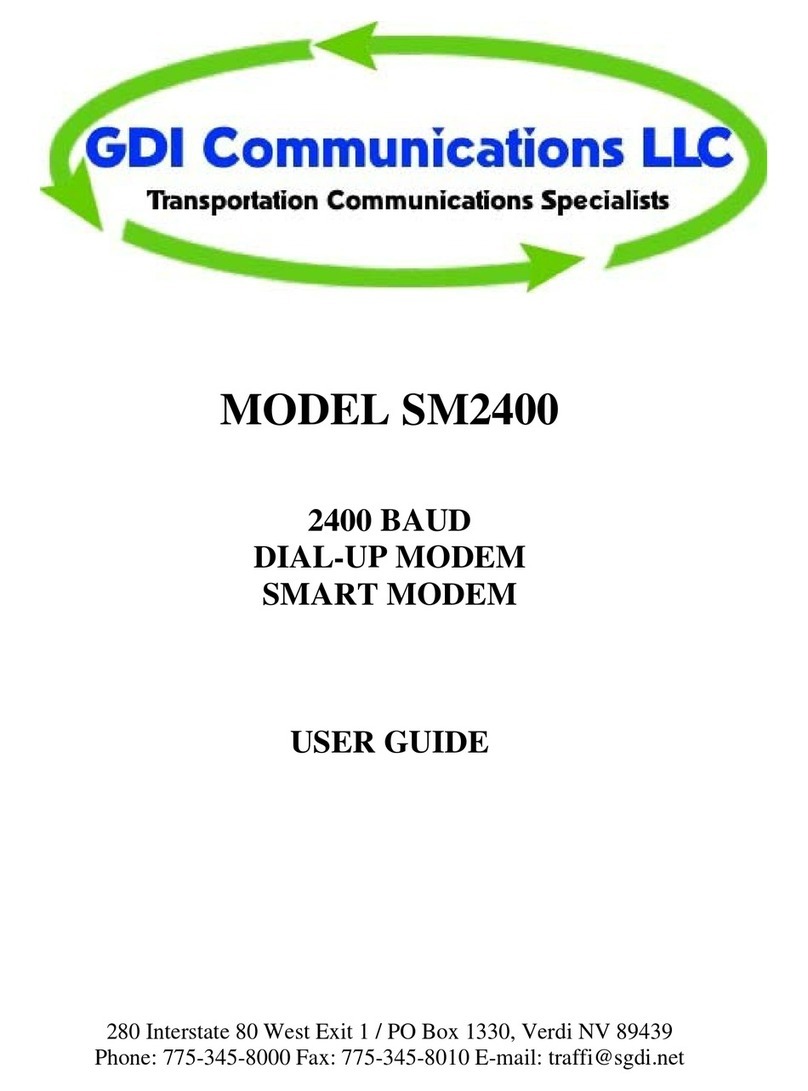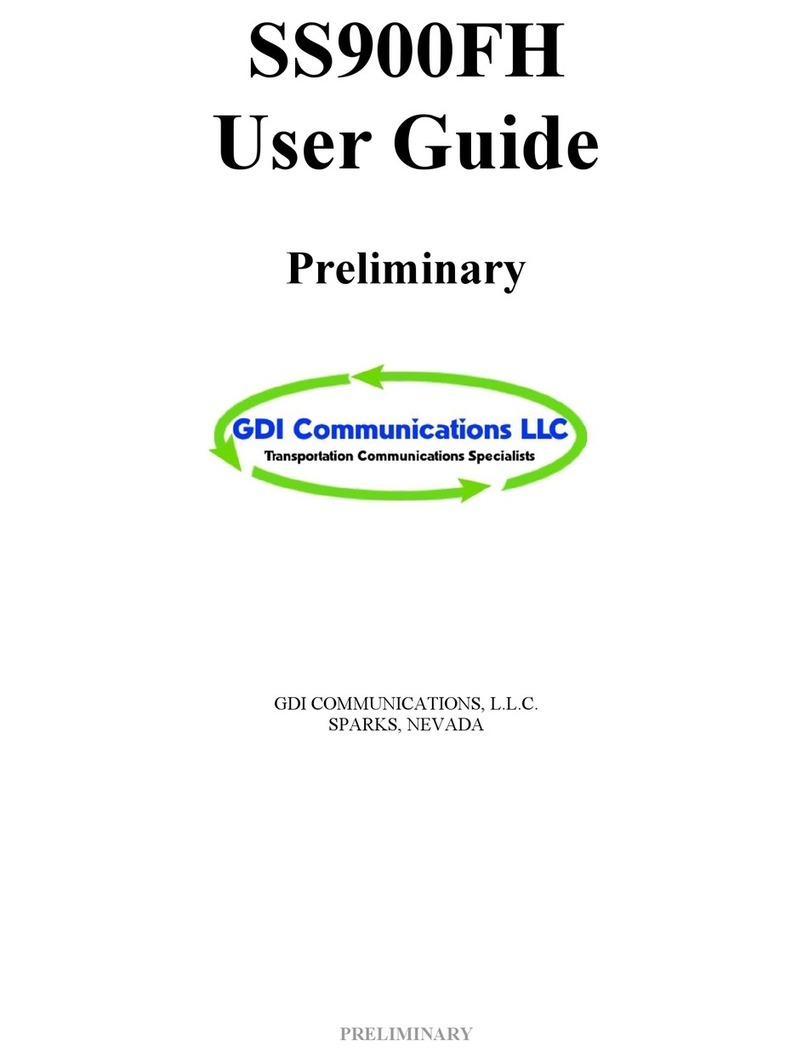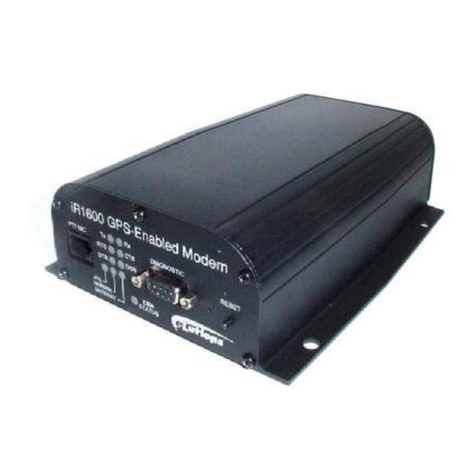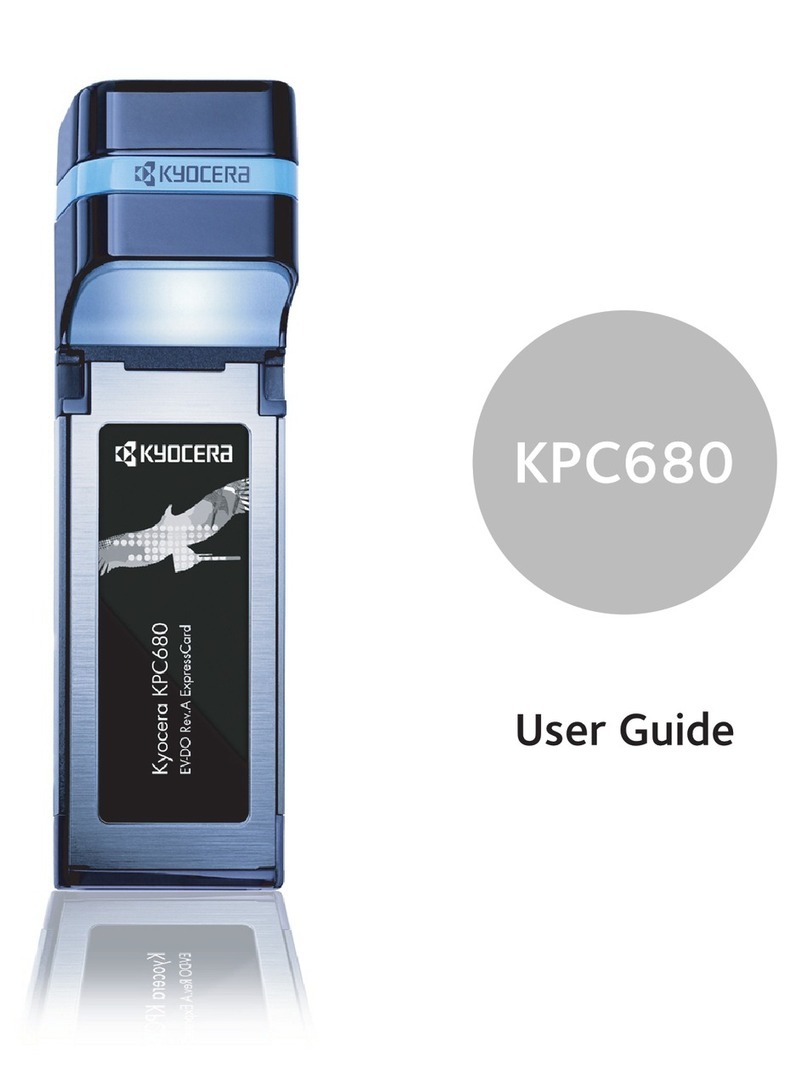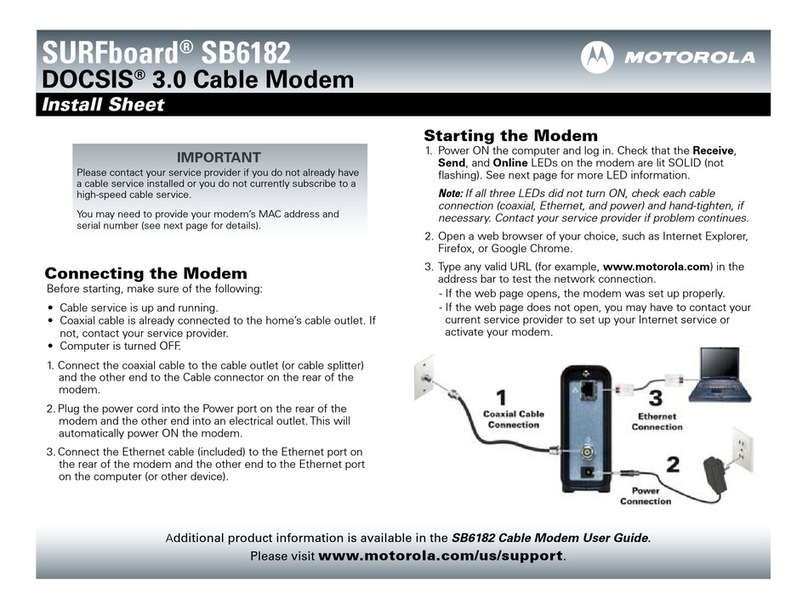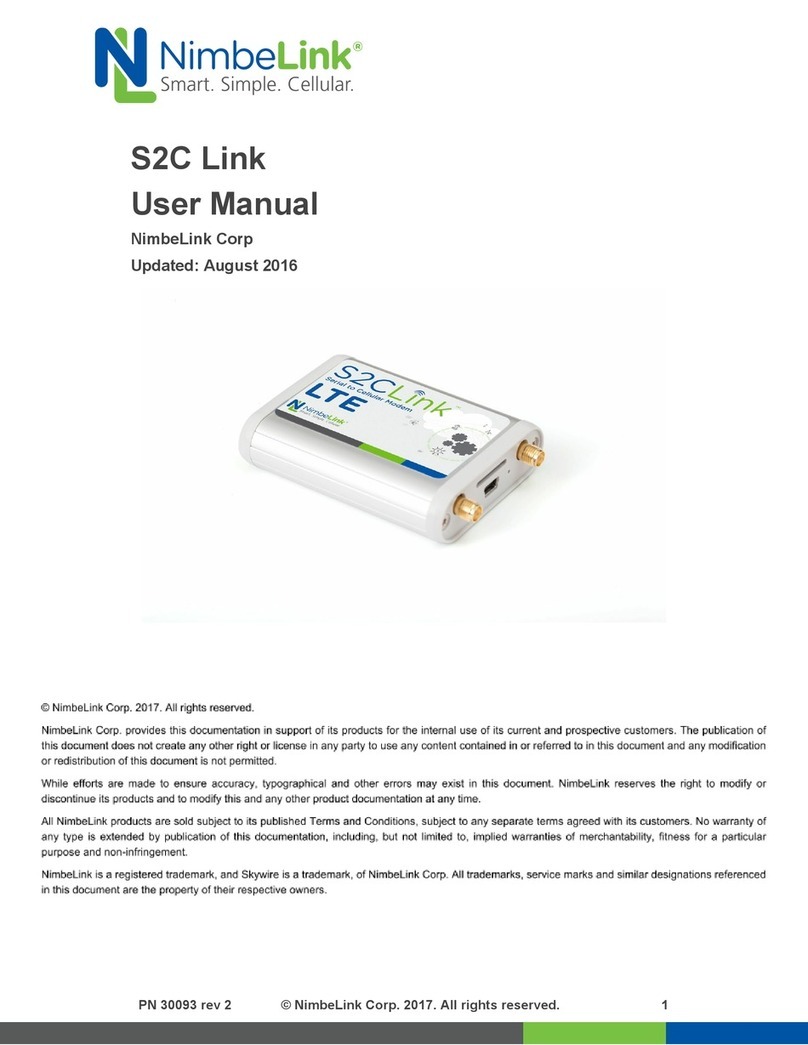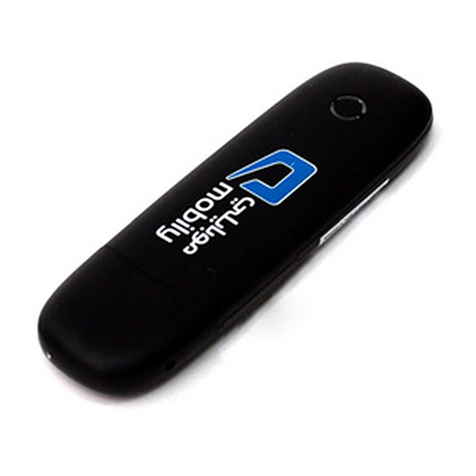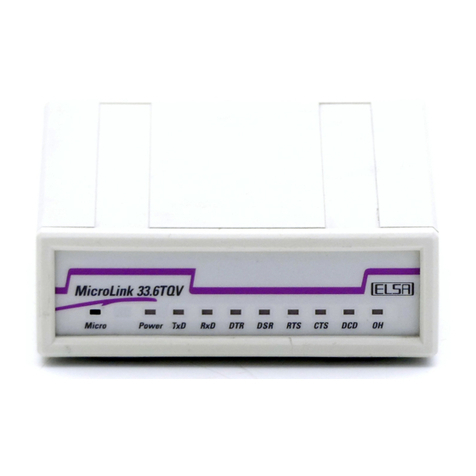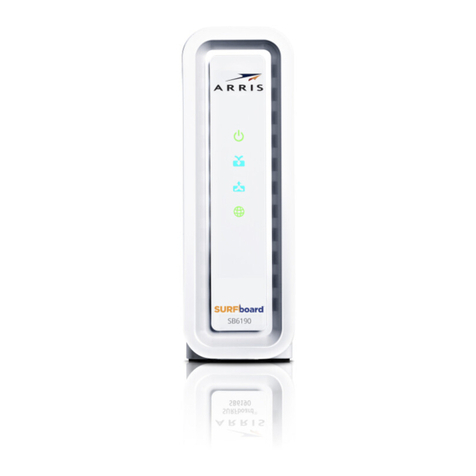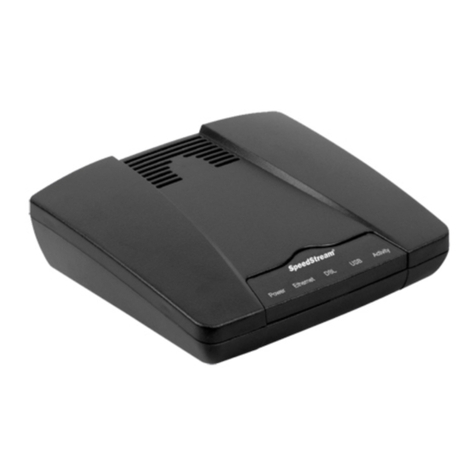GDI FLD-496SA User manual

A00474-1
A
1
MODEL FLD-496SA
9600 Baud
FIBER OPTIC/FSK MODEM
GDI COMMUNICATIONS, LLC
280 Interstate 80 Exit 1
PO Box 1330
Verdi, NV 89439
Phone (775) 345-8000 Fax (775) 345-8010


PROPRIETARY DATA
This document contains confidential, proprietary data with all
rights and titles reserved by GDI Communications LLC. By
accepting this document, the recipient assumes custody hereof
and agrees not to disclose this data or any portion of this data to
any unauthorized person without the prior written consent of GDI
Communications LLC. Recipient further agrees not to incorporate
these drawings, specifications or technical information, in whole
or in part, in any other product or endeavor.
THIS LEGEND SHALL BE INCLUDED ON
ANY REPRODUCTION OF THIS DOCUMENT

A00474-1
A
FLD-496SA 2
TABLE OF CONTENTS
DESCRIPTION.................................................................................................................. 3
SPECIFICATIONS ...................................................................................................... 4
INSTALLATION .......................................................................................................... 4
MAINTENANCE............................................................................................................ 6
CONNECTION DIAGRAM................................................................................................... 7

FLD-496S
A
3
A00474-1
A
DESCRIPTION
The FLD-496SA is a combination of a
Fiber Optic Modem and a Type 496
Modem. The FLD-496SA has an FSK
input and output to the Fiber Optic
section of the Modem. This Modem will
tie directly to the FSK interface of our
type Model 496 Modems or other
compatible FSK Modem as is used on
NEMA traffic control equipment. The
existing Modems used in the traffic
control equipment can be left in place
when converting over to a Fiber Optic
system.
This means that you don't have to worry
about not having a standard EIA-232
interface available as with some NEMA
Controllers. Just leave the existing
Modems in place and connect the FLD-
496SA to the FSK lines from the existing
Modem. The FLD-496SA has a removable
Phoenix type terminal block on the rear
panel for easy connection.
The FLD-496SA operates at 9600 Baud.
The frequencies used by the host Modem
should correspond with a Mark Frequency
of 11200 Hz and a Space frequency of
17600 Hz to work correctly.
The FLD-496SA-1 operates at 850 nm
into Multi-mode cable using ST type
connectors. The FLD496SA-2 has 1300
nm single mode LED emitters and
detectors and is available with ST or FC
type connectors. The Fiber Optic section
of the FLD-496SA-1 has a range of about
3-5 Km depending on the connector loses
and quality of the cable. The range of the
FLD-496SA-2 depends on the power level
of the Emitter being used. Power ranges
of –21 to –13 dBm are available.
The FLD-496SA has two modes of
operation: as a Master and as a Remote.
In the Master Mode, data from the FSK
section is transmitted to both Emitters of
the Fiber Optic section. Data from the
two Detectors is ORed together and sent
to the FSK section.
In the Remote Mode of operation, data
coming in on Detector 1 is sent to the FSK
section and to Emitter 2 where the signal
is regenerated and sent on to the next
Remote Modem. Data coming upstream
from a Remote Modem comes in on
Detector 2 and is ORed with data from the
FSK section and is transmitted out
Emitter 1. The Fiber Optic signal is
therefore regenerated. There is no
maximum length for a system as long as
each hop is less than the maximum range
of the FLD-496SA being used.
A 9-Volt Lithium battery is used to keep
the Fiber Optic section running in the
event of a power Failure. A front panel
Led indicates that the battery is good
when lit and needs to be replaced when
dark. A front panel switch allows you to
disconnect the battery to prevent it from
discharging when the Modem is not being
used.
The FLD-496SA is normally operated 4
wire full duplex but can also be operated
in a 2 wire half duplex mode by setting
the appropriate switches on the rear
panel. The Local Echo switch is normally
off for full duplex and on for half duplex.
The FLD-496SA also has anti-streaming
capability that can be turned on and off
with a dipswitch on the rear panel. Anti-
streaming prevents a controller from

FLD-496S
A
4
A00474-1
A
continuously transmitting and hogging the
fiber. If a controller tries to transmit for
more than 7 seconds, the local is shut
down. When the Local Controllers starts
operating correctly and drops RTS, the
Anti-streaming circuit will automatically
reset. Anti-streaming is normally not used
in the Master Mode because the Master
can be transmitting for long periods of
time.
SPECIFICATIONS
Power ................... 90-135 VAC 50-60Hz
< 2 Watts
Temperature....... ..-37° to +74° C
Humidity ............ 5- 95% non-condensing
Fiber Interface ...... ST Type Connectors
(FC Optional on 1300nm)
850nm Multi-mode Fiber
1300nm Single-mode
Fiber
FSK SECTION
Mark Frequency .......11,200 Hz
Space Frequency ......17,600 Hz,
Output Level -8 to 0 dBm
Adjustable by Pot.
Receiver sensitivity ............ -40 dBm
Line Impedance ............... .600 Ohms
Modulation...............Phase coherent FSK
Data Rate .......9600 bps (Max.)
Physical Size.....5.75"W x 8.6"D x
1.6"H
FIBER SECTION
850 nm (62.5/125 cable)
Emitter output.............-7 to –16 dBm
Receiver sensitivity.....-40 dBm max
Power budget................. 15 dBm Typ.
1300 nm (8.3 Cable)
Emitter output.......... -21 to –13 dBm
Receiver sensitivity ...... -33dBm
Power Budget ...............12 to 20 dBm
INSTALLATION
The FLD-496SA is very easy to use and
install in a system. The only connector on
the rear panel is the FSK connector. The 4
pins of the connector are labeled for
function in a 4 wire system. For a 2 wire
system use the "Out" pins 3 and 4.
The switches are labeled on the rear
panel. For full duplex operation, the
"FULL" switch should be on and "HALF"
and "ECHO" switches should be OFF. For
Half duplex operation, "FULL" s h o u l d
be OFF and "HALF" and "ECHO"
should be on. The "ECHO" switch
squelches the receiver when transmitting.
"MAST" "RMTE" switch selects Master
or Remote operation as described earlier.
The "MAST" position is usually used for
the central computer that controls or
interrogates the Local controllers. If you
have a point to point system, all of the
Modems can be set in the "MAST"
position.

FLD-496S
A
5
A00474-1
A
The Remote Mode allows daisy chaining
the local modems so that the signal is
sent down one fiber and back up another
fiber to multiple intersections with the
signal being regenerated at each local.
This allows the use of just a pair of fibers
with no restriction on the physical length
of the system as long as no individual
"hop" is longer than the range of a
Modem.
The power cord should be plugged into a
standard 3-prong receptacle that will
supply 90 to 135 VAC 60 Hz. If Battery
back up is required, the battery should be
installed just before powering up the
modem. The battery will start supplying
power as soon as it is plugged in and the
front panel switch is "ON". Therefore
make sure that the Battery switch is in the
"OFF" position until the Modem is
powered up and installed. The battery
will last about 8 hours of power failures.
The battery can be tie-wrapped in place
through the holes in the board and the
holder.
The ST and FC connectors for the Fiber
Optic cable are on the front panel. NEVER
LOOK INTO THE EMITTERS. The
Batteries may be supplying power to the
emitters. The light from the emitters is in
the infrared region of the spectrum and
can't be seen by Humans. The light maybe
intense enough to damage the retina of
the eye. Leave the protectors on unused
ports.
In the Master Mode of operation, both
Emitter 1 and Emitter 2 have the same
data on them and this is sent down stream
to the Remote or Local controllers.
Detector 1 and Detector 2 receive data
from the Local or Remote controllers.
One set (EMT1, DET1 or EMT2, DET2)
can be left unused.
In the Remote Mode of operation, data
coming down stream from the Master
goes in DET1 and is regenerated and sent
out EMT2. EMT2 of the first Remote is
then connected to the next Remote Modem
DET1 in line. Data coming upstream to
the Master comes into DET2 on the
Remote Modem, is regenerated and sent
out EMT1 which is connected to the next
Remote going upstream or DET1 or
DET2 of the Master Modem.
The fiber optic cables cannot be bent
sharply. A sharp bend may cause
attenuation in the cable or may cause the
glass fiber to fracture. The cables
attached to the modem should be
supported.
The only adjustment in the FLD-496SA
is an FSK output level located on the PC
Board. To adjust the Level Potentiometer
you must remove the cover of the FLD-
496SA. The cover can be removed by
taking out the two screws on either the
front or back panels and removing the
panel and then sliding the cover off. Be
CAREFUL—There is 120 VAC on the
Board. Turning the Pot Clockwise
increases the output level. Outputs greater
than 0 dB can be obtained.
FLD496SA-2 and used ports
If DET 2 of the FLD-496SA-2 is not being
used in either a Master or Local/Slave
(last Slave in a Line) a pp li ca ti on, th e
DET 2 should be disabled. This is
done by removing the jumper located
inside the case near DET 2. The jumper is
connected to R24 and C47. The jumper
shunt should be kept on one of the posts
of the header so it won't

FLD-496S
A
6
A00474-1
A
be lost and will be available if needed in
the future.
Disabling the detector will prevent stray
noise from getting into the system. The
Jumper is only used on the FLD 496SA-2
and not the –1 version.
MAINTENANCE
The FLD-496SA does not require any
normal routine maintenance. The only
adjustment inside the FLD-496SA is for
Transmit level, which set for 0 dBm at
the factory.
If the Battery indicator is out, and the
Battery Switch is ON, the Battery should
be replaced. The Battery being used is a
lithium 9 Volt battery. An Alkaline battery
can be used but the back-up time will be
shorter. We supply an ULTRALEFE
U9VL-BP with the modem. A tie-wrap
can be used to secure the battery and
holder to the board.
You should never touch the ends of the
fiber optic cables. Dirt and dust can
render the cable useless. If the cables
need to be cleaned, use reagent grade
isopropyl alcohol and/or dry compressed
air.

FLD-496SA 7
A00474-1A

.

GDI
Communications, L.L.C.
TRAFFIC ELECTRONICS MANUFACTURER ♦SPECIALIZING IN COMMUNICATIONS
280 1-80 WEST, EXIT 1
P.O. BOX 1330
VERDI, NEVADA 89439
TELEPHONE: (775) 345-8000 FAX: (775) 345-8010
Table of contents
Other GDI Modem manuals
